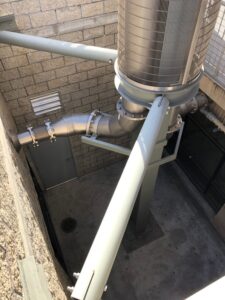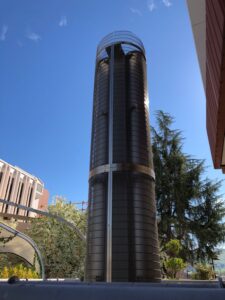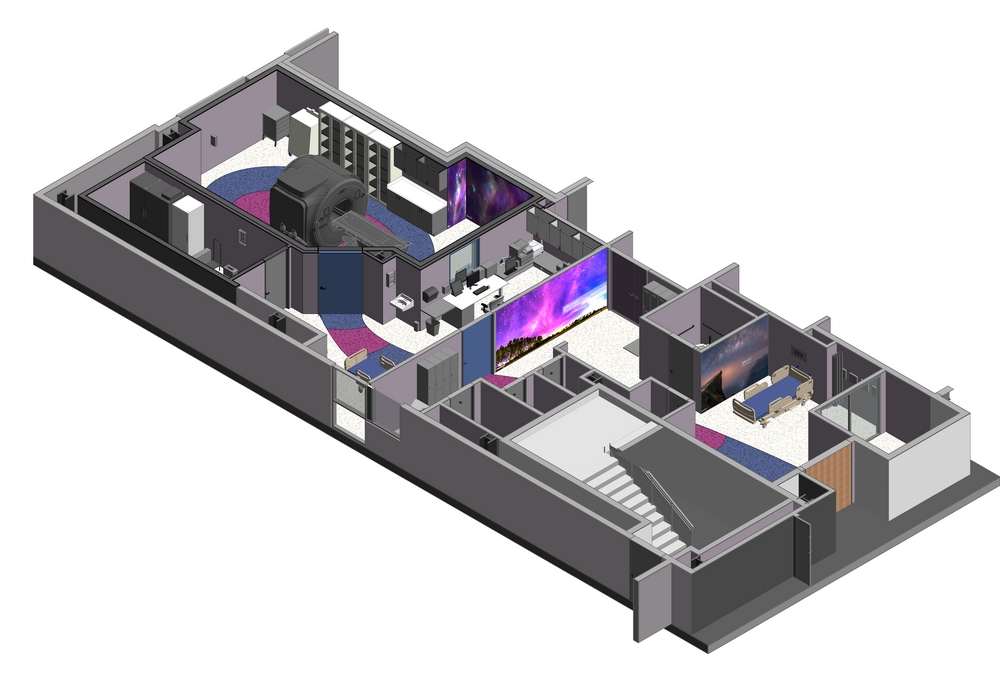When planning and designing MRI rooms and installations, it’s easy for technical complexities to dominate design thinking. However, given the number of patients who might be terrified of undergoing an MRI, perhaps having explored worst-case scenarios through the internet’s wealth of MRIs-gone-wrong videos, an essential task is to look beyond the machines to consider the entirety of the patient experience.
How can we help patients experience the MRI room as a comforting environment that supports them in their healing process?
Asking the right questions
No matter how obtuse, asking appropriate and relevant questions is necessary to define project parameters, manage expectations and identify potential blind spots before they create unwanted surprises. Nuances to consider include:
Does the project involve installing new equipment in a new space or replacing existing equipment?
New builds, to some extent, benefit from a blank slate. Working within existing space, however, means reacting to the limitations imposed by existing conditions. For example, should the room for a new MRI machine be oversized? Given the space of an existing room, when, and how, should we go beyond the minimum requirements in vendor equipment drawings? The challenge is typically that of squeezing a lot of technology in a small area to provide enough space for other essentials. For a major healthcare provider’s pediatrics MRI remodel, replacing a 1.5T unit with a 3.0T unit required adding square footage not only to accommodate the new technology’s clearances, but to account for a patient resuscitation bed needed within the control room. Lesson: pre-design planning is an essential key component to validating a space’s capacity to accommodate and support new equipment—or that the project is not feasible given the desired goals and an alternative is needed.
What is the magnet’s optimal placement and orientation?
There are many factors to consider, from equipment size and magnet height to safety zones and elements such as cameras and signage. Equipment vendors provide site-specific drawings for positioning their equipment with supporting elements in a room and managing the physics of fringe fields and gauss lines up to 5G. But that’s not the end of the planning effort. There are also influences outside the room that can impact a magnet’s operation, along with factors such as signal degradation to RF receivers and poor magnetic field homogeneity that may affect image quality. In one of my team’s recent projects, for example, the MRI room’s direct proximity to parking below risked potential interference with the magnet from passing cars (moving metal), a factor that argued against what might otherwise have been the best placement within the room. Before even considering the use of shielding, understanding the environmental context beyond the MRI room itself is an essential, albeit easily overlooked, effort that contributes to the patient experience not only within but also outside the room.
What is the best approach for accommodating technological advances?
Technology is always evolving—rapidly, of course—and MRI technology is no different. For example, improvements in operation and monitoring capabilities for technicians can mean that it’s unnecessary for them to see directly down the bore. How does this affect equipment positioning and even patient positioning, room layout and workflow? When planning an MRI install, whether in a new or existing space, it’s important to consider not only current technology but to look ahead at the next generation of machines under development. It may not always be possible to fully design for the flexibility needed to accommodate future technology, but it’s certainly the ideal to strive for.
How can we both functional and creative?

Attention to detail is paramount. MRI installs are far less-forgiving projects when it comes to the details; errors can undermine the functionality of the space (or worse), making the scanning process difficult for staff and more stressful for patients. Something as seemingly straightforward as placing a cryogen vent and its exhaust out of the building can have a huge impact—but provide surprising opportunities for creativity. An example involving cryogen vents comes from my team’s MRI install for a major healthcare provider. While the vent was properly located in relation to the machine’s optimal placement inside the room, the exterior outlet was a challenge for two magnets. Our initial approach involved extending not only one, but two vents a short distance to an exterior wall of a below-ground mechanical well. On review, this approach raised concerns for maintenance crew safety when cleaning the well.

The solution: merge and combine the vents into a single larger-diameter vent extending out of the well to a height where exhaust won’t impact human (and animal) life. With help from a roller coaster designer, who assisted with welding and detailing, the vent extension was wrapped in a decorative metal sheet to resemble a cruise ship’s chimney stack. The result offers eye-pleasing public art while solving a functional challenge.
Creating an experience beyond the details
It’s tempting to see technical requirements as design limitations. But as the previous cryogen vent example shows, in practice they can open up opportunities for creative solutions. Of course, these opportunities can arise organically when considering the room’s interior design—colors, artificial windows/skylights, acoustics—concurrently with resolving technical issues. But planning offers even greater opportunities for converting limitations into assets, because it allows teams and clients to proactively consider the specifics of a project in a broader context. It helps to keep in mind that the patient experience doesn’t begin when stepping into the MRI room or end when the imaging is complete: it begins when they enter the hospital, clinic or diagnostic center, and continues through follow-up conversation with their healthcare provider. The above questions may therefore have different answers when considered in relation to the total flow of a patient’s experience in and out of the MRI room, and ultimately means the difference between a merely functional room and a space that lives up the vision of a “healing environment.” A few examples:
- When remodeling an MRI suite in a major provider’s medical office building located near an active train station, my team not only considered the impact of large moving metal trains, but how access to the suite is shaped by the ability for patients and staff to walk directly into the MOB from the station.
- An imaging center for a major provider was designed with a spa-like atmosphere from front doors to dressing rooms. This tranquil ambiance calms patients before being escorted to imaging.
- For a major healthcare provider’s pediatrics suite, a spaceship-themed experience positively engages children’s imagination to support them through the imaging process, unifying diverse elements from patient hold beds acting as space odyssey portals with a view of the Milky Way to a control room with “galactic” resuscitation beds and wayfinding expressed as travel through a wormhole.
It bears emphasizing that success in creating a holistic patient experience ultimately stems from leveraging multiple perspectives. By sharing the big picture with everyone—architects, equipment and shielding vendors, structural and MEP engineers, general contractor and related subtrades—it becomes easier to identify, resolve and go beyond the technical issues when it’s still possible to consider options without impacting cost or schedule.





